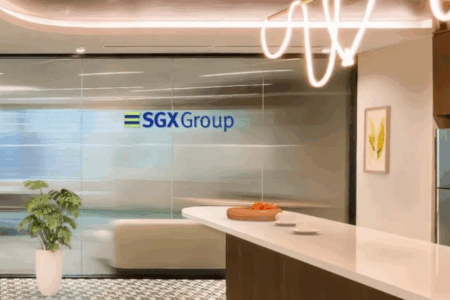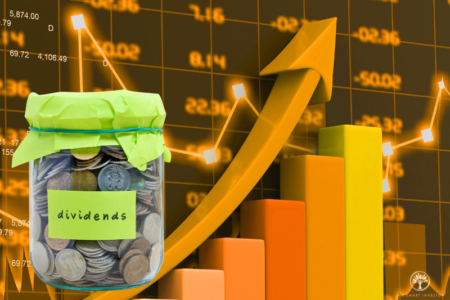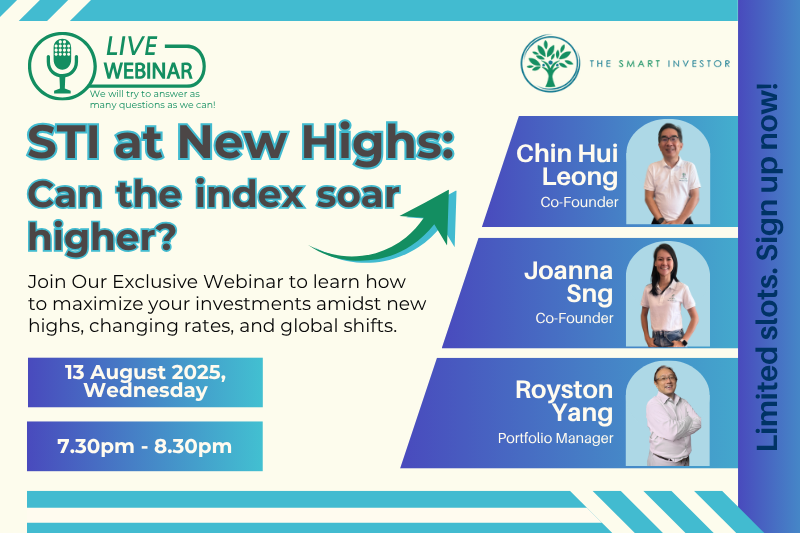As of last Friday (7 November 2025), the NASDAQ Composite Index (INDEXNASDAQ: .IXIC) sits 4% off its all-time high while the broader S&P 500 hovers 3% below its peak.
The surprise?
Singapore’s Straits Times Index (SGX: ^STI) broke past 4,500 to close at a record high, diverging from its US counterparts.
Despite the different fortunes, the same anxiety grips investors on both sides of the Pacific.
Those already invested worry that a correction lurks around the corner, threatening their gains.
Meanwhile, those sitting on the sidelines share identical concerns: why invest at near-record highs if prices will inevitably fall?
Here’s the uncomfortable truth: the stock market will eventually fall.
History says it will happen.
Every bull market ends, every rally reverses, and every peak precedes a valley.
Yet, the perennial question that nobody can answer is: when?
Market corrections are more common than you think
The risk of a decline is real.
Market corrections, or declines of 10% or more, have happened in the past and will happen again.
The statistics are sobering.
Since 1993, Singapore’s STI has experienced falls of 10% or more in eight out of every 10 years.
On the other side of the ocean, the S&P 500 experiences a similar correction about once every year-and-a-half, according to wealth manager Ben Carlson.
The tech-heavy NASDAQ historically falls once every two years.
With corrections this frequent, you’d think selling would be straightforward.
The logic is compelling: sell now, wait for the inevitable drop, then buy back lower.
There’s a clear benefit to this move: you lock in your gains.
You can sleep soundly knowing your gains are safe, maybe even take that vacation you’ve been planning.
That’s the easy part.
But for every upside, there are downsides to consider too.
Start by having the right expectations
There are pros and cons to every move you make in the stock market.
The trick isn’t finding the perfect move — it’s going in with the right expectations.
Let me show you what I mean using a local stock: DBS Group (SGX: D05)
Shares closed at nearly S$55 per share last Friday, a whisker away from its all-time high.
You could make a compelling case for selling today.
At this level, the bank’s shares trade at well over two times its net book value — far above its historical price-to-book (P/B) average of 1.5 times.
So, as the logic goes, you can sell now at this premium valuation, wait for shares to drift back to historical norms — then, buy back at a lower price.
The upside is clear: you lock in real gains — that’s real money in your pocket.
So far, so good — but consider what you are giving up.
DBS has been paying an annualised dividend of S$3 per share in 2025 — that’s gone.
At current prices, that’s a 5.5% yield you’re walking away from.
For those happy to bank their gains, that’s acceptable.
But if you were counting on DBS’s dividends as passive income, this creates a new problem: where do you find another stock yielding 5.5% with the same business quality?
That’s the downside you have to accept.
The great illusion of entry price
But wait — since the DBS’s average P/B ratio is 1.5 times, shares will eventually revert to their mean.
It’s possible, of course.
So, all you have to do is wait for the right entry price and buy again, right?
Here’s what most people don’t tell you: if DBS falls from S$55 today to, say, S$35 in the future, it wouldn’t be business as usual.
Do the math.
If dividends remained at S$3 per share, the yield would be well over 8%.
When was the last time DBS offered anywhere close to this yield?
The answer: March 2020, when news of the pandemic broke and the stock market tanked 33% in less than a month.
Remember that period?
Vaccines were just a hope.
The Monetary Authority of Singapore (MAS) called on banks to limit dividends to 60% of 2019 levels to preserve capital.
Dividends were slashed overnight.
Put yourself in those shoes.
Airports shuttering, streets emptying, no end to the pandemic in sight.
The very dividend you were counting on just got cut.
Would you have the guts to buy DBS shares in that situation?
Here’s the truth: if you fear losing your gains today and sell, it’s unlikely you’ll suddenly find the courage to buy again when shares fall.
Think about the psychology here.
The same instinct that makes you sell at S$55 to “protect” your gains will scream at you not to buy at S$35 when the world looks like it’s ending.
Most investors tell themselves they’ll be rational.
But when fear grips the market that tightly, when every headline screams calamity, when the dividend you’re counting on gets slashed — that’s when your perfectly logical plan collides with raw human emotion.
And emotion usually wins.
As Mike Tyson once said “Everyone has a plan, until they get punched in the mouth”.
Accepting what you don’t know, but knowing what you want
Holding shares at market highs can be unnerving.
You may even feel foolish, refusing to sell even though history says a correction is coming. And when it does arrive, your wealth will shrink along with the falling market.
That’s the price of staying invested.
Then again, nobody knows when that correction will happen.
It could be next week, next year, or after the market climbs another 30%.
More importantly, there’s no guarantee you can buy back at lower prices.
So here’s the question that matters: what do you actually want?
If it’s a continuous stream of dividends, staying invested with a diversified portfolio of stocks delivers exactly that.
Every quarter, regardless of market gyrations, those dividend cheques keep arriving.
No timing required. No second-guessing.
There’s another upside most investors miss.
Great businesses with excess cash don’t just maintain dividends—they increase them.
For instance, DBS has raised its dividend from S$0.78 five years ago to S$3 today.
That’s a 285% increase your portfolio enjoyed simply by doing nothing.
The investors who sold to “wait for a better entry”?
They missed all of it.
Get Smart: There is no right answer, only your answer
The right move isn’t about timing the market perfectly—it’s about understanding what you want and accepting what you can’t control.
For each decision you make, go in with the right expectations.
If you sell because you’ve made enough for retirement, that’s the right move — for you.
If you hold because you want the dividend stream, that’s equally valid.
If you’re building wealth over decades and can stomach the volatility, staying invested makes sense.
Here’s what matters: your success isn’t measured against the market or your neighbour’s portfolio.
It’s measured against your own goals.
The stock market is simply a vehicle to get you where you want to go. Nothing more.
You don’t win by selling at the perfect peak or buying at the absolute bottom.
You win by reaching your destination — whether that’s retirement security, passive income, or generational wealth.
Simplicity works.
So, while others agonize over whether to sell today or tomorrow, focus on the only question that matters: what do you need from the stock market?
Let that be your North Star.
Ready to discover the next $100 billion stock? Our newest FREE report dives deep into five popular SGX companies that many say are the next big thing. Read our team’s findings to guide your investment strategy. Click the link here to download now.
Follow us on Facebook, Instagram and Telegram for the latest investing news and analyses!
Disclosure: Chin Hui Leong owns shares in DBS Group.





